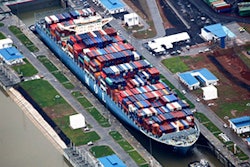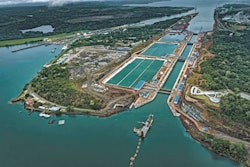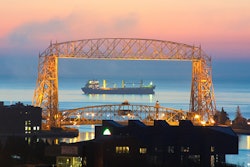
Key points:
- East Coast ports’ share of laden Asian imports grew 2.72 percentage points during the period that included the West Coast labor and port disruptions. After the crisis on the Pacific coast subsided, East Coast ports continued to increase their share of Asian imports another 0.76 percentage points, to 31.4 percent, between the nine-month period ending March 2015 and the one ending March 2016.
- The gains on both coasts are significant, not just because it may show that shippers made some West Coast diversions permanent, but because they reflect importers’ longer-term plans to diversify the ports on which they depend.
- The big question in the years ahead is whether the expanded Panama Canal, which late next month will allow passage of ships with capacities of up to 14,000 twenty-foot-equivalent units (TEUs), will spur shippers to move more Asian imports through East and Gulf ports.
- While the expanded canal will allow carriers to gain greater economies of scale, it’s far from certain those gains will be passed onto shippers.
- Another dilemma is how shippers will balance the route through Panama with its canal tolls as well as longer transit times to the East Coast, against the shorter, ship-to-rail, intermodal transits via the West Coast.
Savannah Is the Clear Winner
The port of Savannah grabbed the largest share of the laden Asian imports during the worst of the West Coast port disruption, and then built on those gains even after the International Longshore and Warehouse Union and waterfront employees made peace. The Georgia port’s share of Asian imports expanded 1.67 percentage points from a 6.64 percent share in the nine-month period ending in March 2014 to a 8.31 percent share in the nine-month period ending March 2016.
Between the nine-month period ending March 2014 and the nine-month period ending March 2015, Savannah’s Asian import volume increased 36.9 percent to 859,683 TEUs.
The Gulf Makes Gains
Houston handled several extra-loader ships during the West Coast congestion in late 2014 and early 2015, and retained some of that volume after Los Angeles and Long Beach returned to normal, port officials said. The Port of Houston has been seeking additional Asian services to handle expected growth of at least 300,000 TEUs in annual volume of regionally produced resins and other petrochemical products during the next few years.
Houston and Mobile are expanding their container facilities to handle larger ships. Houston is continuing the build-out of its Bayport terminal, and is rebuilding and expanding capacity at its Barbours Cut terminal. In anticipation of larger ships through the expanded Panama Canal, APM Terminals in Mobile has ordered two super-post-Panamax cranes that can span 22 rows of containers.


















